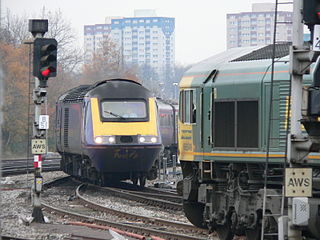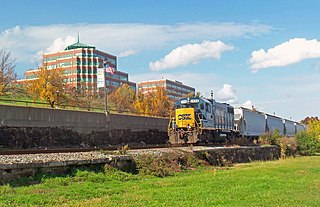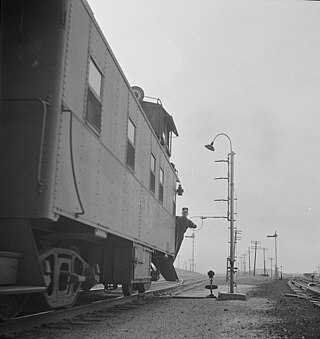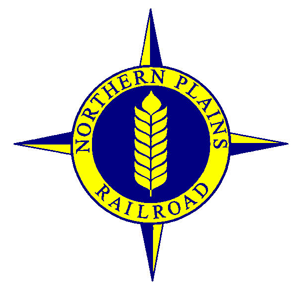
Railway signalling (BE), also called railroad signaling (AE), is a system used to control the movement of railway traffic. Trains move on fixed rails, making them uniquely susceptible to collision. This susceptibility is exacerbated by the enormous weight and inertia of a train, which makes it difficult to quickly stop when encountering an obstacle. In the UK, the Regulation of Railways Act 1889 introduced a series of requirements on matters such as the implementation of interlocked block signalling and other safety measures as a direct result of the Armagh rail disaster in that year.

Centralized traffic control (CTC) is a form of railway signalling that originated in North America. CTC consolidates train routing decisions that were previously carried out by local signal operators or the train crews themselves. The system consists of a centralized train dispatcher's office that controls railroad interlockings and traffic flows in portions of the rail system designated as CTC territory. One hallmark of CTC is a control panel with a graphical depiction of the railroad. On this panel, the dispatcher can keep track of trains' locations across the territory that the dispatcher controls. Larger railroads may have multiple dispatcher's offices and even multiple dispatchers for each operating division. These offices are usually located near the busiest yards or stations, and their operational qualities can be compared to air traffic towers.

The River Subdivision is a railroad line owned by CSX Transportation in the U.S. states of New Jersey and New York. The line runs from the North Bergen Yard in Hudson County, New Jersey north to Ravena, New York, along the alignment of the West Shore Railroad, a former New York Central Railroad line.

A train order or timetable and train order is "an order issued by or through a proper railway official to govern the movement of trains". Train order operation is the system by which trains are safely moved by train orders. It is distinguished from other forms of train operation in which the authority to move trains is given by fixed signals or cab signalling.

The Iowa Interstate Railroad is a Class II regional railroad operating in the central United States. The railroad is owned by Railroad Development Corporation of Pittsburgh, Pennsylvania.
Standards for North American railroad signaling in the United States are issued by the Association of American Railroads (AAR), which is a trade association of the railroads of Canada, the US, and Mexico. Their system is loosely based on practices developed in the United Kingdom during the early years of railway development. However, North American practice diverged from that of the United Kingdom due to different operating conditions and economic factors between the two regions. In Canada, the Canadian Rail Operating Rules (CROR) are approved by the Minister of Transport under the authority of the Railway Safety Act. Each railway company or transit authority in Canada issues its own CROR rulebook with special instructions peculiar to each individual property. Among the distinctions are:

A train dispatcher (US), rail traffic controller (Canada), train controller (Australia), train service controller (Singapore) or signaller (UK), is employed by a railroad to direct and facilitate the movement of trains over an assigned territory, which is usually part, or all, of a railroad operating division. The dispatcher is also responsible for cost effective movement of trains and other on-track railroad equipment to optimize physical (trains) and human resource (crews) assets.
Direct traffic control (DTC) is a system for authorizing track occupancy used on some railroads instead of or in addition to signals. It is known as "direct" traffic control because the train dispatcher gives track authority directly to the train crew via radio, as opposed to through wayside personnel via telephone or telegraph, as in train orders.

The Northern Plains Railroad is a short line railroad that operates over 344 miles (554 km) of track in the northern U.S. state of Minnesota and the northern U.S. state of North Dakota.

The Puget Sound and Pacific Railroad operates over 150 miles of track serving the U.S. State of Washington, and is headquartered in Centralia, Washington where interchanges with the BNSF Railway and Union Pacific Railroad are made.
The General Code of Operating Rules (GCOR) is a set of operating rules for railroads in the United States. The GCOR is used by Class I railroads west of Chicago, most of the Class II railroads, and many Short-line railroads.
The La Junta Subdivision is a railway line owned, maintained and operated by the BNSF Railway. The line stretches for 395 miles (636 km) across the south-central and southwestern parts of Kansas and the southeastern part of Colorado. The line branches off from the Emporia Subdivision at Ellinor, Kansas, and runs through Newton, Hutchinson, Dodge City and Garden City, all within the state of Kansas. The line connects with Boise City Subdivision at Las Animas Junction in Las Animas, Colorado, which connects it further to La Junta, Colorado.

Automatic block signaling (ABS), spelled automatic block signalling or called track circuit block (TCB) in the UK, is a railroad communications system that consists of a series of signals that divide a railway line into a series of sections, called blocks. The system controls the movement of trains between the blocks using automatic signals. ABS operation is designed to allow trains operating in the same direction to follow each other in a safe manner without risk of rear-end collision.
Dark territory is a term used in the North American railroad industry to describe a section of running track not controlled by signals. Train movements in dark territory were previously handled by timetable and train order operation, but since the widespread adoption of two way radio communications these have been replaced by track warrants and direct traffic control, with train dispatchers managing train movements directly. Today most dark territory consists of lightly used secondary branch lines and industrial tracks with speeds ranging between 25 miles per hour (40 km/h) and 40 miles per hour (64 km/h); however, there do exist a small minority of main lines that fall into the category.
The Plymouth Subdivision is a freight railroad line in the U.S. state of Michigan. It is owned by CSX. It connects the Plymouth Diamond at milepost CH 24.5 to Grand Rapids at CH 148.1, passing through the Lansing metropolitan area en route. Other towns served include South Lyon, Brighton, Howell, Fowlerville, Williamston, Grand Ledge, Lake Odessa, Clarksville, and Alto. Operationally, it is part of the CSX Chicago Division, dispatched from Jacksonville, Florida.
The El Paso Subdivision is a railroad line of the BNSF Railway extending 230 miles (370 km) from Belen, New Mexico, to El Paso, Texas. The entire line is dark territory and movements are controlled by Track Warrant Control.

The Columbus Subdivision is a freight railroad line extending from Columbus, Ohio, north to Fostoria, Ohio. The line is currently owned by CSX Transportation.
The Callahan Subdivision is a CSX Transportation railroad subdivision within the Jacksonville Division on the former Seaboard Air Line Railroad. The sub extends northward 20 miles from Baldwin, Florida, where the Jacksonville Terminal Subdivision's S Line and Florida Gulf & Atlantic Railroad meet just north of Baldwin Yard, a classification yard. According to Jacksonville Division Timetable Number 4 published in 2005, the sub runs from milepost SM 0.18 to milepost SM 20.0, where it joins the Nahunta Subdivision, a former Atlantic Coast Line Railroad, in Callahan, Florida. The line serves as a bypass to Jacksonville.
The BNSF Avard Subdivision runs 177 miles (285 km) of track between Tulsa, Oklahoma, starting at milepost (MP) 425.2, to Avard, Oklahoma, MP 602, where it meets the BNSF Panhandle Sub.
The Chillicothe Subdivision or "Chillicothe Sub" is a railway line running about 229 miles (369 km) from Chicago, Illinois to Fort Madison, Iowa in the United States of America. It is operated by BNSF Railway as part of their Southern Transcon route from Chicago to Los Angeles. The Chillicothe Subdivision is a high volume route connecting three principal yards in Chicago in the east and the Marceline Subdivision in the west which continues to Kansas City.









